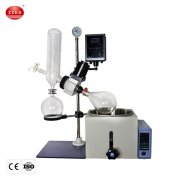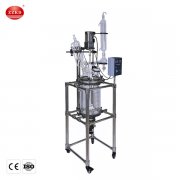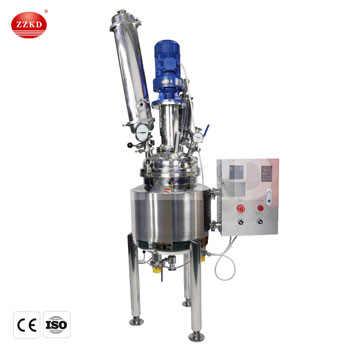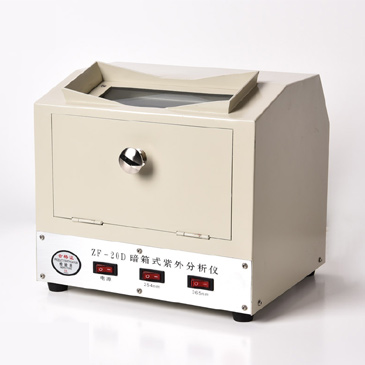Extraction is a fundamental process in various fields such as pharmaceuticals, chemistry, and biotechnology. It involves separating a desired substance from a complex mixture, making it a critical step in the production of pure compounds. In the laboratory, several types of equipment are used for extraction, each with its own advantages and disadvantages. This article will explore the rotary evaporator, essential oil extractor, falling film evaporator, short path distillation, supercritical extraction, and Soxhlet extraction, comparing their pros and cons to help determine which equipment is best suited for specific applications.
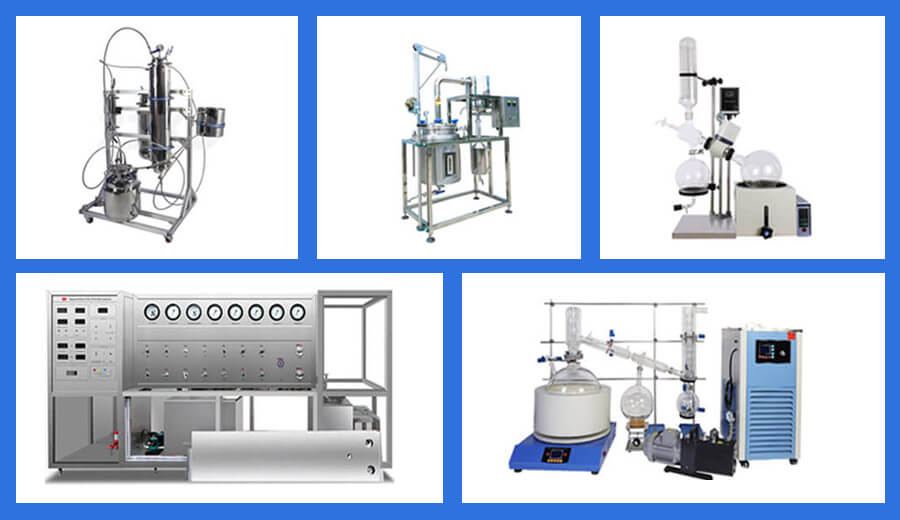
The rotary evaporator, commonly known as a rotovap, is widely used in laboratories for the efficient and gentle removal of solvents from samples by evaporation. It consists of a motor unit that rotates the evaporation flask, a vacuum system to reduce the pressure, a heated water or oil bath, a condenser, and a collection flask.
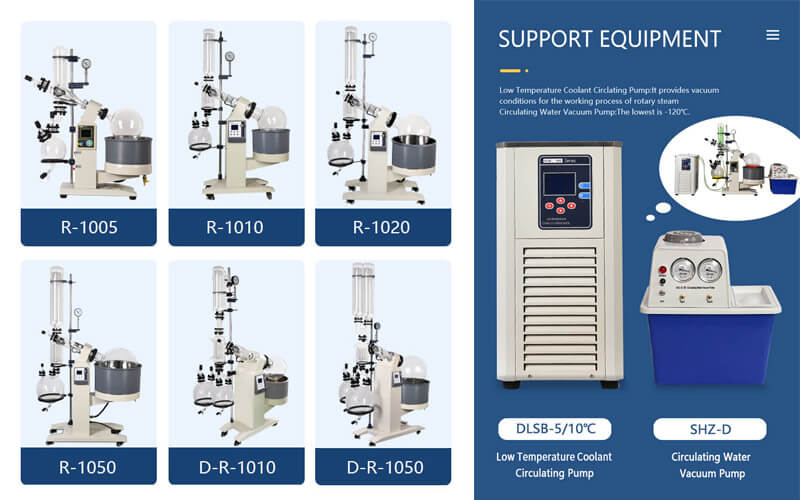
Advantages:
-
Efficiency: Rotary evaporators are highly efficient at removing solvents under reduced pressure, which speeds up the evaporation process.
-
Gentle Processing: The gentle rotation and reduced pressure prevent thermal degradation of sensitive compounds.
-
Versatility: Suitable for a wide range of solvents and applications, including concentration of solutions, solvent recycling, and extraction of volatile compounds.
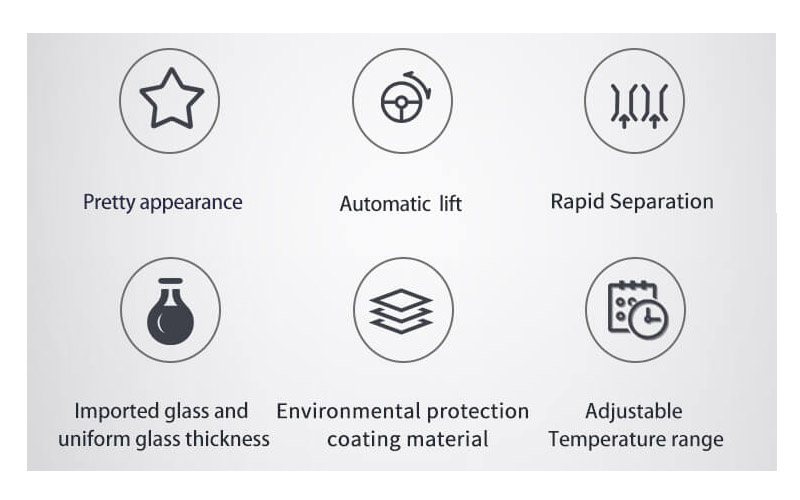
Disadvantages:
Have you ever wondered why rotary evaporators are so popular in laboratories?
Their ability to gently and efficiently remove solvents without compromising the integrity of sensitive compounds makes them indispensable.
Essential oil extractors are specialized devices used to extract essential oils from plant materials. The most common methods are steam distillation, hydro distillation, and cold pressing.
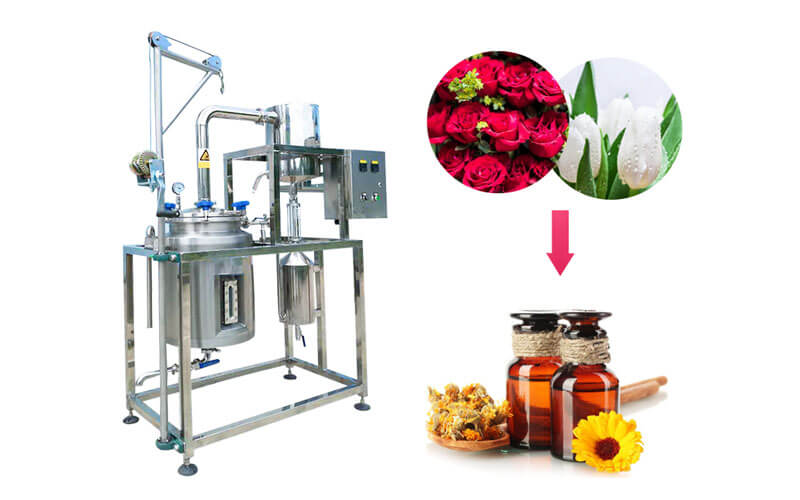
Advantages:
-
High Purity: Effective in obtaining high-purity essential oils.
-
Specificity: Tailored for extracting volatile aromatic compounds without degradation.
-
Variety: Available in various sizes and configurations to suit different scales of production.
Disadvantages:
-
Limited Application: Primarily used for essential oils and not suitable for other types of extractions.
-
Process Duration: Some methods, like steam distillation, can be time-consuming.
A falling film evaporator is used for the evaporation and concentration of liquids, where the liquid flows as a thin film down the inner surface of a heated tube.
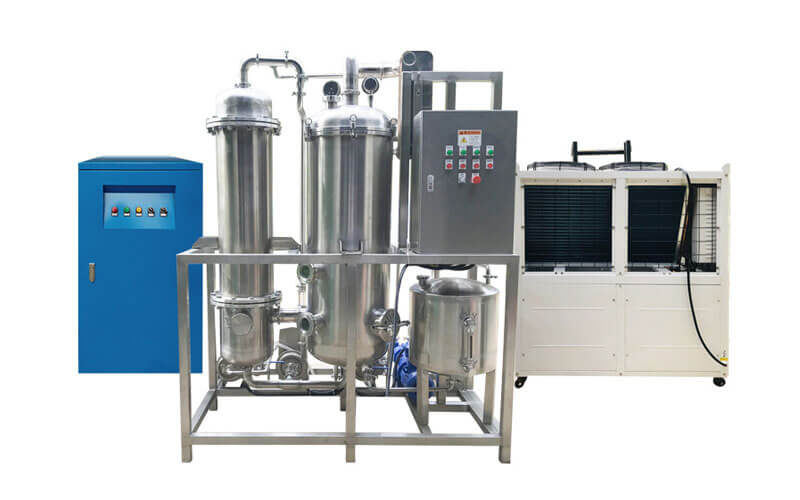
Advantages:
-
High Efficiency: Excellent heat transfer rates, making the process highly efficient.
-
Low Residence Time: Minimizes thermal degradation of heat-sensitive products.
-
Scalability: Suitable for both small and large-scale operations.
Disadvantages:
Short path distillation is a technique used for the purification of compounds by separating them based on their boiling points in a very short distance, typically within a few centimeters.
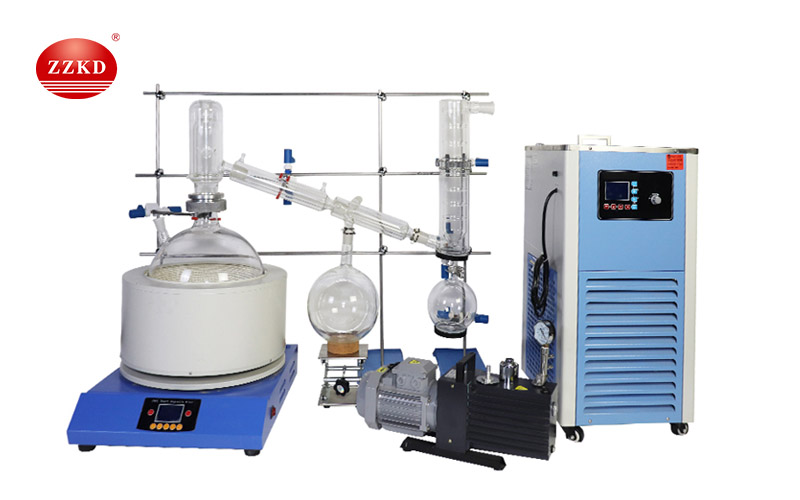
Advantages:
-
Purity: Capable of achieving high-purity separations.
-
Efficiency: Effective for heat-sensitive and high-boiling-point compounds.
-
Compact Design: Requires less space compared to traditional distillation systems.
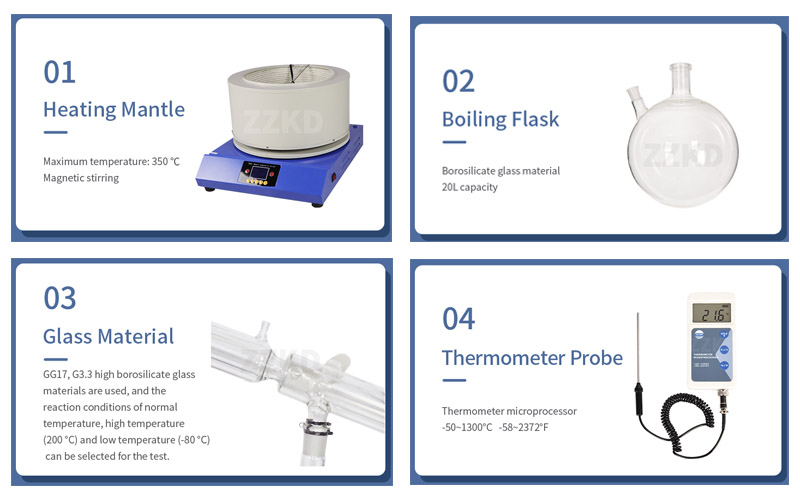
Disadvantages:
-
Throughput: Limited throughput, making it less suitable for large-scale production.
-
Operation: Requires careful control and expertise to operate effectively.
What makes short path distillation stand out in the extraction of high-purity compounds?
Its ability to separate compounds based on slight differences in boiling points within a very short distance ensures high efficiency and purity.
Supercritical extraction, particularly using supercritical CO2, is a method where CO2 is used as the solvent at supercritical conditions (above its critical temperature and pressure) to extract compounds.
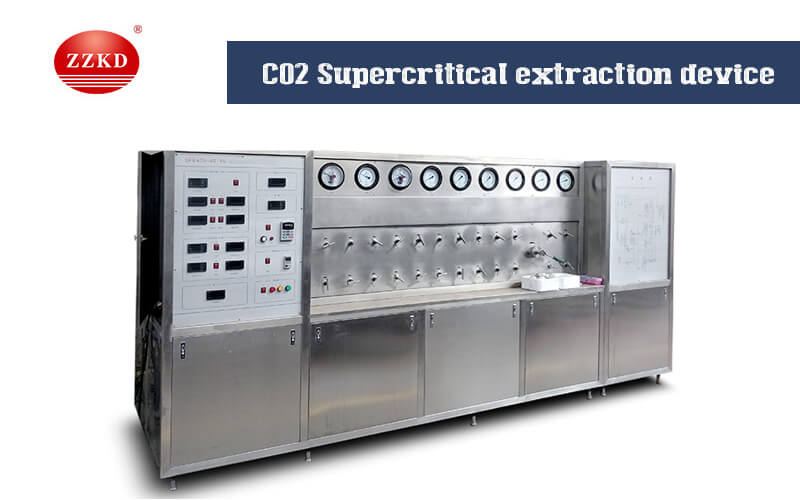
Advantages:
-
Non-Toxic: CO2 is non-toxic and leaves no solvent residue in the final product.
-
Selectivity: Can be tuned to selectively extract specific compounds by adjusting pressure and temperature.
-
Environmentally Friendly: CO2 is a green solvent and the process is environmentally friendly.
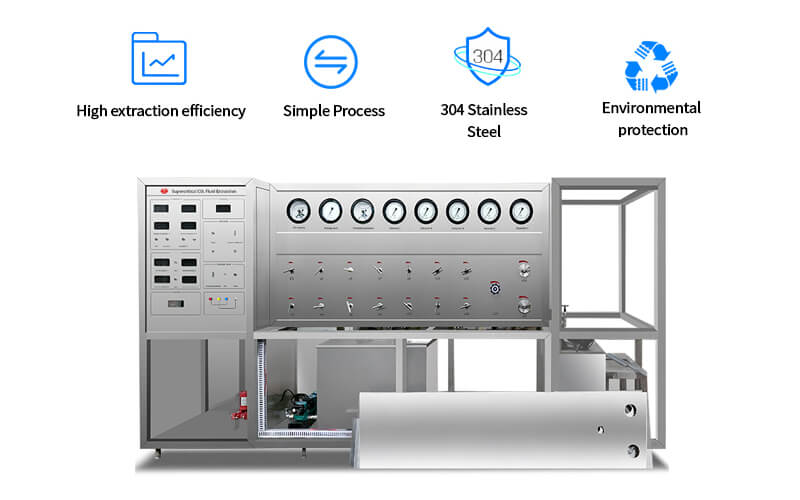
Disadvantages:
Soxhlet extraction is a technique used for extracting compounds from solid material by repeated washing (percolation) with a solvent in a specialized apparatus.
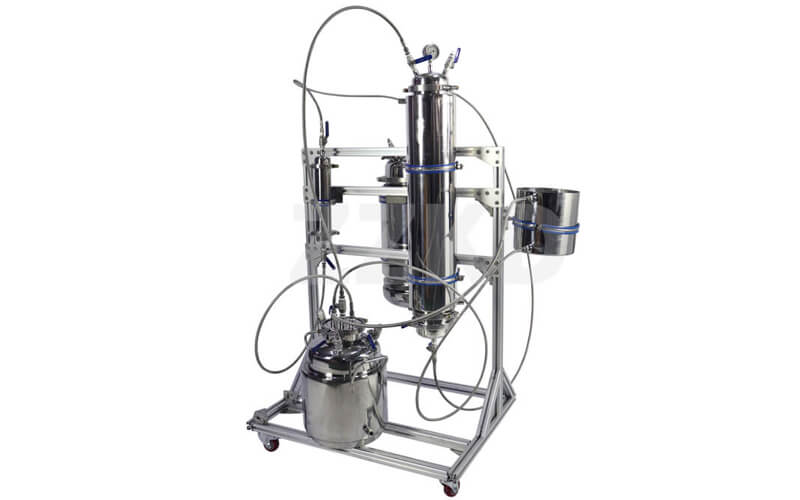
Advantages:
-
Efficiency: Effective for continuous extraction, allowing for thorough extraction of the target compound.
-
Simplicity: Simple and straightforward setup and operation.
-
Versatility: Suitable for a wide range of solid-liquid extractions.
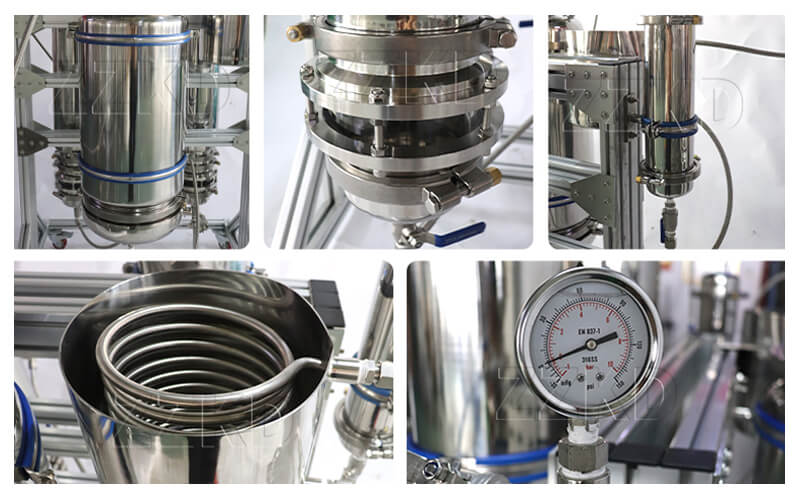
Disadvantages:
-
Time-Consuming: Can be slow compared to other extraction methods.
-
Solvent Use: Requires significant amounts of solvent, which can be costly and environmentally burdensome.
Is Soxhlet extraction the best choice for thorough solid-liquid extraction?
Its continuous and thorough washing process makes it ideal for comprehensive extractions, albeit at the cost of time and solvent use.
Comparing the Extraction Methods
When choosing the right extraction equipment, several factors must be considered, including the nature of the compound, scale of production, purity requirements, and cost constraints.
-
Rotary Evaporator vs. Falling Film Evaporator: While both are effective for solvent removal, the rotary evaporator is ideal for small-scale and gentle extractions, whereas the falling film evaporator is better suited for large-scale operations with its higher efficiency and capacity.
-
Short Path Distillation vs. Supercritical Extraction: Short path distillation is excellent for high-purity separations of heat-sensitive compounds, making it suitable for laboratory-scale operations. Supercritical extraction, on the other hand, offers high selectivity and environmental benefits, but at a higher cost and complexity.
-
Essential Oil Extractor vs. Soxhlet Extraction: Essential oil extractors are specialized for high-purity extraction of volatile compounds from plant materials, while Soxhlet extraction provides a versatile and thorough method for a wide range of solid-liquid extractions, despite being time-consuming.
In conclusion, each extraction method and equipment has its unique strengths and limitations. The choice of equipment should be guided by the specific needs of the extraction process, including the type of compound, desired purity, scale of production, and budget. Understanding these factors will ensure the selection of the most suitable equipment, leading to efficient and effective extraction outcomes.
Which extraction method aligns best with your needs?
Consider the nature of your compounds, the required purity, and your production scale to make an informed decision.
By carefully evaluating the pros and cons of each extraction method, laboratories can optimize their processes, ensuring high-quality outcomes and efficient use of resources. Whether for research, product development, or large-scale production, the right extraction equipment is crucial for success.

 Products
Products





